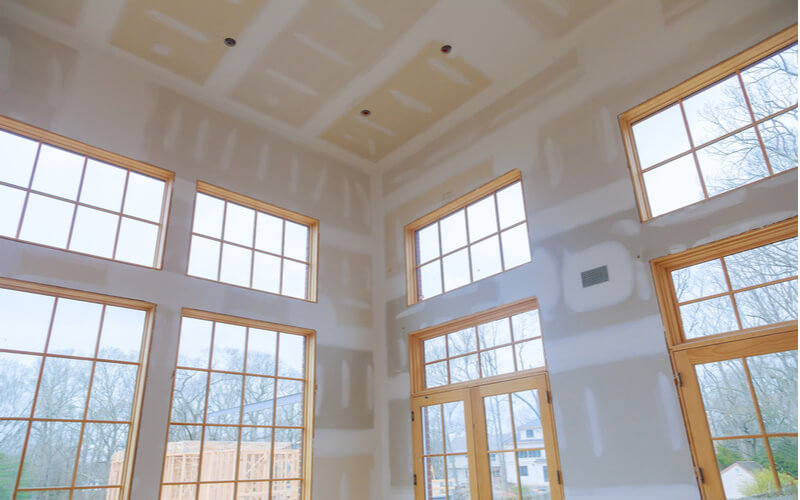Drywall sheets are a modern construction miracle that are affordable, customizable and easy to install. They reduce the time of construction and protect your house from external elements. However, like any other construction material, maintaining drywall can be a challenge, especially during winter. By running a drywall inspection, you can avoid your home turning into an ice castle during the colder months. Here are a few ways to maintain your drywall to ensure you keep your home warm this winter.
Fill in Holes
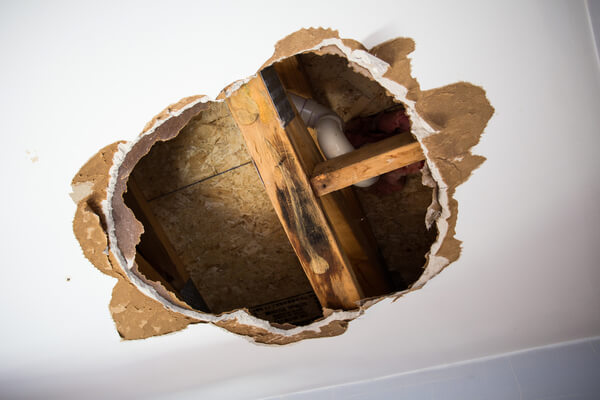 While hanging pictures, decorations, moving furniture or any other renovation work, small and big holes can be left on your drywall. Smaller holes are easier to fix using quick adhesives and paint. However, bigger holes may need a part of drywall replaced, including adding insulation and metal frames. Based on the size and location of these holes a local drywall repair specialist can get them fixed. Not only are larger holes an eyesore, but they can also lead to drafty rooms. The holes in your drywalls can allow cold air to flow freely through the rooms hampering the overall indoor temperature.
While hanging pictures, decorations, moving furniture or any other renovation work, small and big holes can be left on your drywall. Smaller holes are easier to fix using quick adhesives and paint. However, bigger holes may need a part of drywall replaced, including adding insulation and metal frames. Based on the size and location of these holes a local drywall repair specialist can get them fixed. Not only are larger holes an eyesore, but they can also lead to drafty rooms. The holes in your drywalls can allow cold air to flow freely through the rooms hampering the overall indoor temperature.
Fix Seasonal Cracks
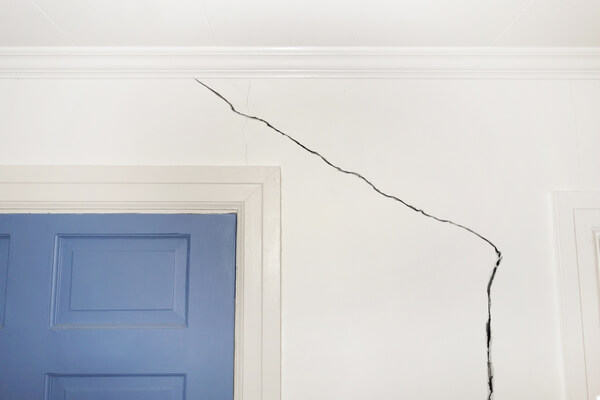 Drywall cracks are often found in three particular areas: in door and window corners, wall joints where multiple pieces of drywall meet, and the area where the drywall meets the ceiling. Changes in indoor, as well as outdoor temperatures such as humidity, expands and contracts drywall. Drywalls are more prone to cracks during winter rather than summer or spring.
Drywall cracks are often found in three particular areas: in door and window corners, wall joints where multiple pieces of drywall meet, and the area where the drywall meets the ceiling. Changes in indoor, as well as outdoor temperatures such as humidity, expands and contracts drywall. Drywalls are more prone to cracks during winter rather than summer or spring.
Getting these cracks repaired before harsh winter begins is important to maintain the longevity of the drywall. Having cracks on your walls isn’t aesthetically pleasing as well. A big crack around the corners of the wall can chip the paint away and leave space for mold and moisture saturation. Just like the holes, even the cracks can hamper the balance of indoor temperature and sneak a few cold-air puffs into your home.
Get Your Plumbing Fixed
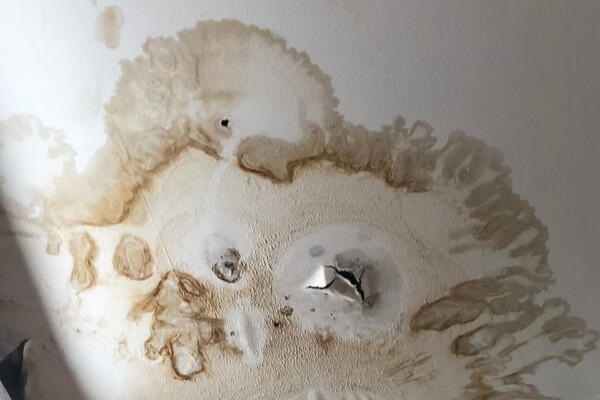 A sudden drop in temperature can lead to frozen or bursting pipes. Avoid moisture damage to your drywall and ceiling by getting your plumbing fixed as soon as you notice a problem. Leaky or burst pipes and mold saturation around them can harm the structural integrity of your drywall. If there is already a plumbing problem then in addition to getting it fixed by a plumber, hire a painter to repair the affected area of your drywall. The painter will sand the wall and give it a coat of stain-resistant primer to avoid any future moisture damage. Fixing a plumbing problem will also help reduce water bills.
A sudden drop in temperature can lead to frozen or bursting pipes. Avoid moisture damage to your drywall and ceiling by getting your plumbing fixed as soon as you notice a problem. Leaky or burst pipes and mold saturation around them can harm the structural integrity of your drywall. If there is already a plumbing problem then in addition to getting it fixed by a plumber, hire a painter to repair the affected area of your drywall. The painter will sand the wall and give it a coat of stain-resistant primer to avoid any future moisture damage. Fixing a plumbing problem will also help reduce water bills.
Inspect the Drywall Compounds and Joints
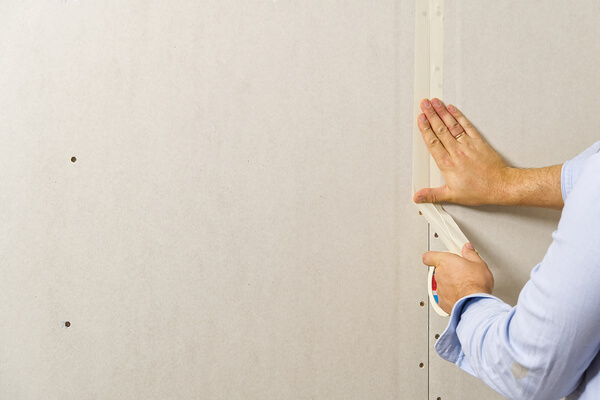 In winter, drywall can shrink and leave a gap between their joints giving cold air a chance to push through. This will result in your centralized HVAC system being unable to maintain the house’s core temperature, leaving you in shivering chills. Before the temperature drops below 55°F/13°C make sure you inspect the drywall joints, compound, and board nails to avoid sagging, shrinkage or nail popping. Need help? A local drywall repair expert can inspect and get it fixed for you in no time.
In winter, drywall can shrink and leave a gap between their joints giving cold air a chance to push through. This will result in your centralized HVAC system being unable to maintain the house’s core temperature, leaving you in shivering chills. Before the temperature drops below 55°F/13°C make sure you inspect the drywall joints, compound, and board nails to avoid sagging, shrinkage or nail popping. Need help? A local drywall repair expert can inspect and get it fixed for you in no time.
Insulate Your Drywall
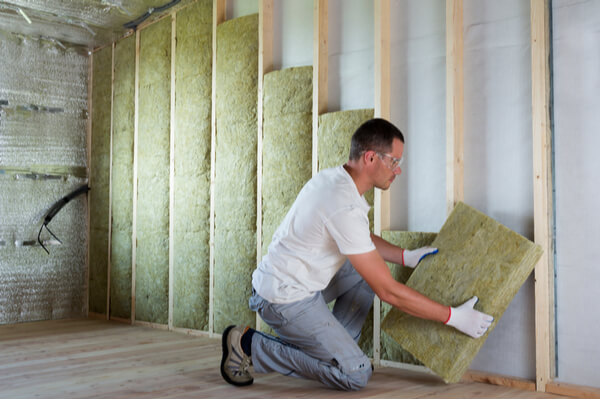 If you don’t want to live in an ice castle just like Princess Elsa of Erandale this winter, you must consider adding good insulation to your drywall. You can choose spray foam, blown-in, fibreglass or reflective barriers to insulate your drywall as per your budget. It’s ideal to get the new insulation before the snow hits your roof. While getting the new insulation installed, you can also use this opportunity to get your drywall repaired or replaced if required.
If you don’t want to live in an ice castle just like Princess Elsa of Erandale this winter, you must consider adding good insulation to your drywall. You can choose spray foam, blown-in, fibreglass or reflective barriers to insulate your drywall as per your budget. It’s ideal to get the new insulation before the snow hits your roof. While getting the new insulation installed, you can also use this opportunity to get your drywall repaired or replaced if required.
Replace Drywall Before Temperatures Get Too Low
Installing or replacing drywall is a job of patience. Proper drywall installation will take at least 3-4 days with the right tools and techniques. If it’s too cold or snowing, it will become very difficult to run any repairs or replacements on the exterior drywall. It is also recommended that drywall should be installed when the temperature is above 55°F/13°C or higher. So consider getting the job done as soon as possible!
Proper drywall maintenance will keep your house warm during winter, help reduce energy bills and will be aesthetically pleasing. It will also improve their longevity so you don’t have to invest in expensive drywall replacement year over year. Get in touch with a local pro today to get your drywall repaired or replaced!
